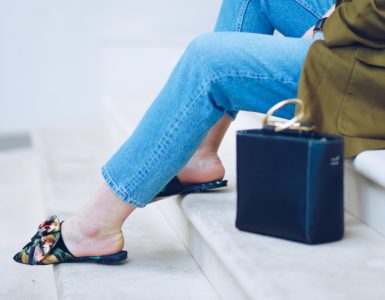Studio 5 Beauty & Style Contributor Holly Stone says there is a five-step formula to talk yourself through.
You will start to see seasonal clothing show up on the racks long before you see the actual change in the weather. For the retail fashion industry Spring starts in January. Summer starts in March. Fall starts in July. Winter starts in September. About a month after you see seasonal clothing appear, the introductory season sales begin.
Introductory to season sales
Spring Clothes: February
Summer Clothes: April
Fall Clothes: August
Winter Clothes: October
End of season clearance
Spring Clothes: April
Summer Clothes: July
Fall Clothes: September
Winter Clothes: January
5 QUESTIONS TO ASK YOURSELF BEFORE YOU PURCHASE AN ITEM ON SALE
1. Is this a Season starter sale or a clearance sale?
Take advantage of the season starter sales to purchase the things you wear the most. You will have a great selection of styles, colors and sizes to find exactly what you like. Clearance sales are a little more difficult as it is the end of season left-overs. Use clearance sales as an opportunity to buy and try new styles or colors. That way if you don’t like it, you are not out much money. Things purchased on clearance can be considered disposable.
2. Does my weight fluctuate during that season?
If your weight fluctuates season to season, and you are purchasing an item at the end of a season keep in mind that you will be wearing it at the beginning of the season next year. For example, if you gain weight in the fall/winter and lose it in the spring, purchase the size you are at the BEGINNING of the season, not the end.
3. Am I buying it only because it is inexpensive?
Remember that things purchased on clearance will be put away for up to 6 months. Impulse buying is common with regards to clothing and money will be wasted if you don’t love the item and are only purchasing it because it is on sale. 5 impulse purchases of items of clothing that look and fit average could be equal to one full price purchase that looks and fits FABULOUSLY! Don’t be tempted just because of a good deal.
4. Is it in harmony with my personal coloring?
Personal coloring is determined by 3 things: hair color, skin tone and eye color. By assessing your traits to identify which 2 are dominant for a warm (think Thanksgiving/harvest) or cool (think Easter/pastel) color temperature, you will find the balance of the color tones that are most flattering on you. If it is not within your personal coloring, it will not be as flattering and therefore no matter the season or the price tag, will not be fashionable on you.
5. Is it a fad, trend, or a classic?
This concept relates to color, style and fit.
A fad is short lived. If it is a fad DON’T BUY IT. There is a reason it is on clearance and if you try to wear it the next season, it will be unfashionable.
Example: scarves in the spring, neon or candy shop colors, tunic box blouses
A trend takes time to build and lasts for up to 3 years.
Example: specific animal prints, peasant blouses, cork wedge shoes
A classic is timeless and will ALWAYS be fashionable.
Example: Classic white blouse, denim jacket, flip flops.















Add comment